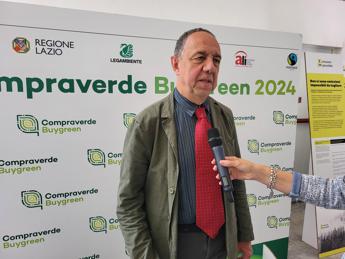“Without major action to reduce emissions, global temperature is on track to rise
by 2.5°C to 4.5°C by 2100” (NASA 2023)
“We Will Not Sign Our Own Death Warrant” (a delegate at COP28)
by Andrew Glikson
Whether anything can be done by humans to arrest or reverse global warming and its consequences for the habitability of planet Earth remains an open question, for which neither climate science nor the ignorant hordes of politicians and economists, oblivious to the basic laws of physics, have the answer. However, it is likely that over the next centuries or longer the flow of cold water from the melting of the Greenland and Antarctica ice sheets will slow down the mean rate of warming.
An projection by NOAA states: “While we cannot stop global warming overnight, heat-trapping gases and soot (“black carbon”). This projection takes neither the amplifying feedback, i.e. from warming oceans, melting ice sheets, migrating climate zones and melting of methane, nor the time factor into account.
A summary analysis of the principal factors relevant to this question follows:
Having ignored climate science, dismissed climate scientists and repeatedly confected lies while global heating accelerates with deleterious consequences, Homo “sapiens” is finding itself on track toward carbon poisoning of the atmosphere, the lungs of the inhabitable Earth, acidification of the hydrosphere and coating of the land with carbon and plastics.
In a new paper, a group of leading climate scientists (Hansen et al., 2023) indicates mean global temperature is currently accelerating toward 2.0°C above pre-industrial temperature by the middle of the decade (Figure 1). The Arctic is warming nearly four times faster than the rest of the world over the last 43 years, on average around 3℃ warmer than it was in 1980. Over the past 30 years Antarctica has been one of the fastest-changing places on Earth, warming more than 3 times than the rest of the world.
 |
| [ Figure. 1. Global temperature relative to 1880-1920 based on the GISS (Goddard Institute of Space Studies) analysis - by James Hansen et al., 2023. ] |
As the polar regions warm, the tropical climate zones expand and the mid-latitudes, where the most fertile soils and the bulk of the population live, are contracting.
Thus (Figure 2.):
- Agro-climate zones in eastern Europe experienced a northward migration velocity of 100 km per 10 years over the past 40 years.
- Northward migration of climate zones in Europe may be up to two times faster in the next decades.
- Negative impacts of heat stress are expected to non-linearly increase in large parts of southern and southeastern Europe.
 |
| [ Figure 2. (a) Agro-climate zonation of Europe based on growing season length (GSL) and active temperature sum (ATS) for the period between 1975 and 1995.The identified agro-climate zones are named as follows (going from north to south): boreal north (BON), boreal south (BOS), nemoral (NEM), continental (CON), Pannonian (PAN), northern maritime (NMA), southern maritime (SMA) and Mediterranean (MED). (b) The migration of agro-climate zones between the 1975–1995 and 1996–2016 periods. For better distinction, only the areas affected by migration of agro-climate zones are displayed (colored areas), while gray color denotes the areas where the agro-climate zones have not changed - Ceglar et al. 2019. ] |
Factors rendering a potential reversal of global warming unlikely include:
- Reversal or arrest of global heating from the level of ~1.5°C or higher above pre-industrial temperatures, reversal or arrest of polar-ward migration of climate zones and reversal or arrest of melting of the Greenland and Antarctic ice sheets, requires major cooling of the Earth, is unlikely within the time frame of civilization.
- Where scientific breakthroughs would allow effective climate mitigation, for example global cooling by CO₂ drawdown, the question is whether Homo sapiens ─ recorded by history as an invasive blood-stained tribal species ─ would be able to avoid the absolute crime such as destroying its home planet?
A factor rarely taken into account emerges from climate science publications such as by Hansen et al. (1996) in their key paper “Ice melt, sea level rise and superstorms: evidence from paleoclimate data, climate modelling, and modern observations that 2°C global warming could be dangerous” (Figure 3.).
 | |
|
Here the flow of cold ice melt water results in formation of large pools of cold water in the Atlantic and Southern oceans, inducing a contraction of the tropical climate zone and an overall decline in mean global temperatures to -0.33°C by 2096 (Figure 4.). The collision between the cold air and water fronts and the tropical war air mass would lead to severe storms over large tracts of Earth.
 |
| [ Figure 4. Surface air temperature (◦C) relative to 1880–1920 in (a) 2065, (b) 2080, and (c) 2096. Top row is IPCC scenario A1B. Ice melt with 10-year doubling is added in other scenarios - James Hansen et al. 2016. ] |
A/Prof. Andrew Y Glikson
Earth and Paleo-climate scientist
Books:
The Asteroid Impact Connection of Planetary Evolution
https://www.springer.com/gp/book/9789400763272
The Archaean: Geological and Geochemical Windows into the Early Earth
https://www.springer.com/gp/book/9783319079073
The Plutocene: Blueprints for a Post-Anthropocene Greenhouse Earth
https://www.springer.com/gp/book/9783319572369
The Event Horizon: Homo Prometheus and the Climate Catastrophe
https://www.springer.com/gp/book/9783030547332
Climate, Fire and Human Evolution: The Deep Time Dimensions of the Anthropocene
https://www.springer.com/gp/book/9783319225111
Evolution of the Atmosphere, Fire and the Anthropocene Climate Event Horizon
https://www.springer.com/gp/book/9789400773318
From Stars to Brains: Milestones in the Planetary Evolution of Life and Intelligence
https://www.springer.com/us/book/9783030106027
Asteroids Impacts, Crustal Evolution and Related Mineral Systems with Special Reference to Australia
https://www.springer.com/us/book/9783319745442
The Fatal Species: From Warlike Primates to Planetary Mass Extinction
https://www.springer.com/gp/book/9783030754679
The Trials of Gaia. Milestones in the evolution of Earth with reference to the Antropocene
https://www.amazon.com.au/Trials-Gaia-Milestones-Evolution-Anthropocene/dp/3031237080
The Asteroid Impact Connection of Planetary Evolution
https://www.springer.com/gp/book/9789400763272
The Archaean: Geological and Geochemical Windows into the Early Earth
https://www.springer.com/gp/book/9783319079073
The Plutocene: Blueprints for a Post-Anthropocene Greenhouse Earth
https://www.springer.com/gp/book/9783319572369
The Event Horizon: Homo Prometheus and the Climate Catastrophe
https://www.springer.com/gp/book/9783030547332
Climate, Fire and Human Evolution: The Deep Time Dimensions of the Anthropocene
https://www.springer.com/gp/book/9783319225111
Evolution of the Atmosphere, Fire and the Anthropocene Climate Event Horizon
https://www.springer.com/gp/book/9789400773318
From Stars to Brains: Milestones in the Planetary Evolution of Life and Intelligence
https://www.springer.com/us/book/9783030106027
Asteroids Impacts, Crustal Evolution and Related Mineral Systems with Special Reference to Australia
https://www.springer.com/us/book/9783319745442
The Fatal Species: From Warlike Primates to Planetary Mass Extinction
https://www.springer.com/gp/book/9783030754679
The Trials of Gaia. Milestones in the evolution of Earth with reference to the Antropocene
https://www.amazon.com.au/Trials-Gaia-Milestones-Evolution-Anthropocene/dp/3031237080

 4 months ago
37
4 months ago
37



